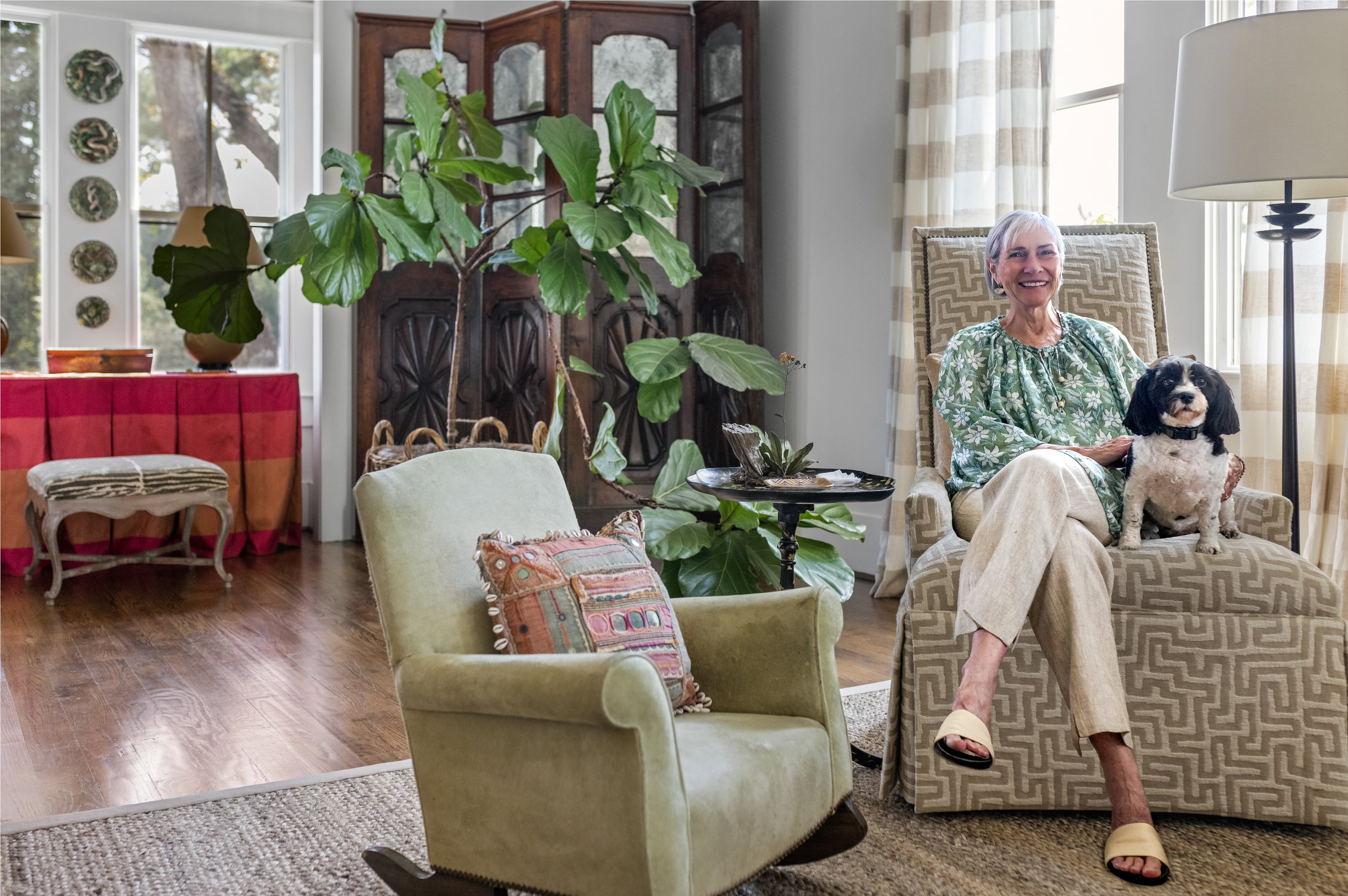Spoons, glasses, aprons and knives: These are a few of Atlanta chefs’ favorite things
As restaurant professionals move through kitchens and dining rooms, they’re bound to accrue collections of all sorts.
Part of this affinity for building collections is about “emotional memories,” said Gunshow chef de cuisine Cody Chassar.
“I think that you work so hard and you put so much of yourself and your emotions and physical labor and tiredness into what you do that you build emotional bonds with things over time and want more of them,” he explained.
Here are some collections found in the kitchens and homes of metro Atlanta cooks and bartenders.
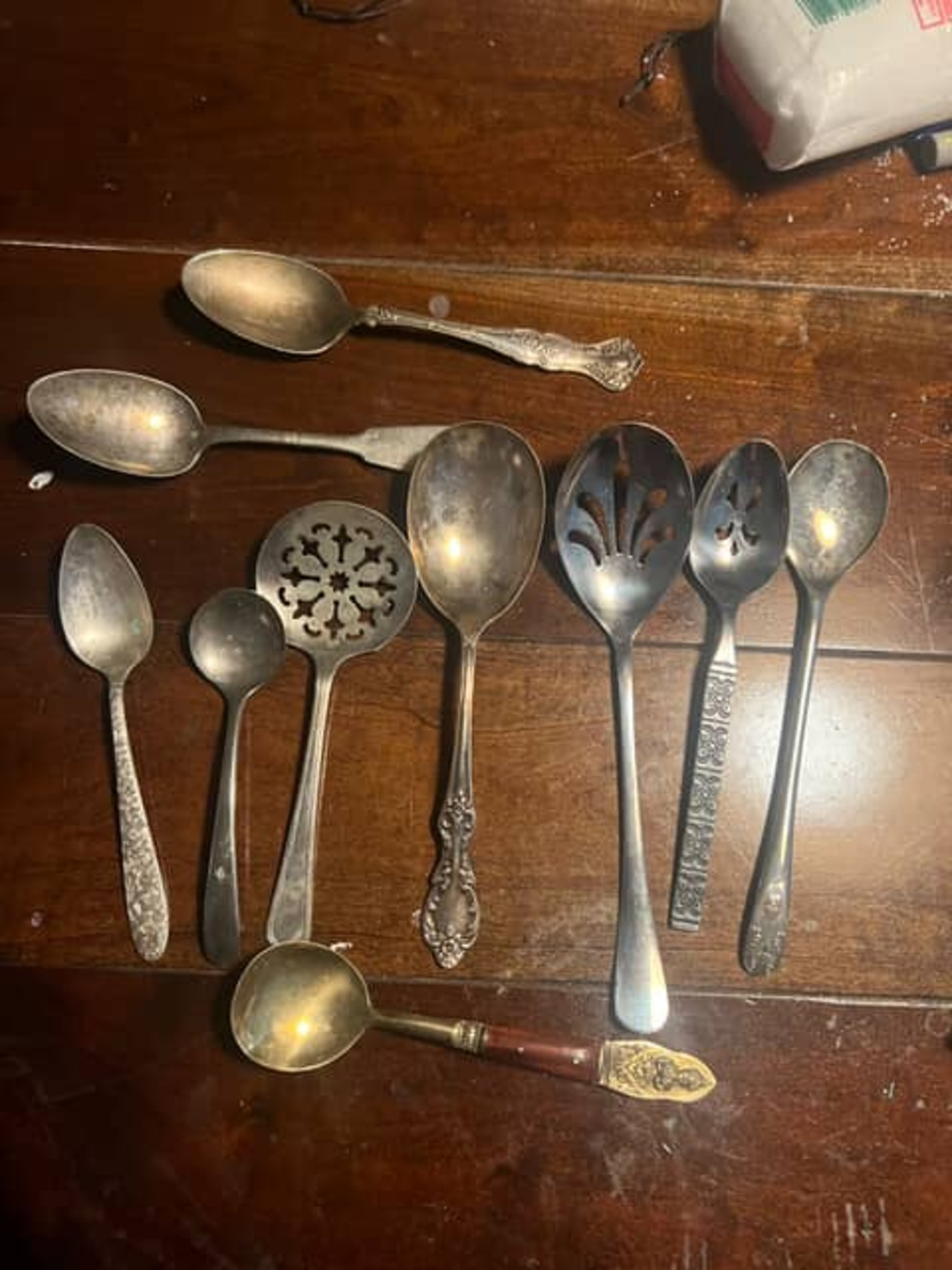
Hudson Rouse, chef-owner of Rising Son, Whoopsie’s and Pure Quill Superette
Hudson Rouse learned just how important spoons were during his first restaurant job when the chef would have him grab a handful of spoons and work down the line tasting dishes.
“Tasting is such an important part of our job,” he said. “If we’re not tasting what we’re serving, we don’t know what we’re serving.”
Rouse would scramble around the kitchen, unrolling silverware to scavenge for spoons.
The spoon became an obsession, with Rouse even raiding the drawers at his dad’s and granny’s houses. When he travels, he makes a point to visit local flea markets to go spoon hunting. Thus far, he’s acquired about 150 spoons.
He has containers for his special spoons at each of his restaurants and at home.
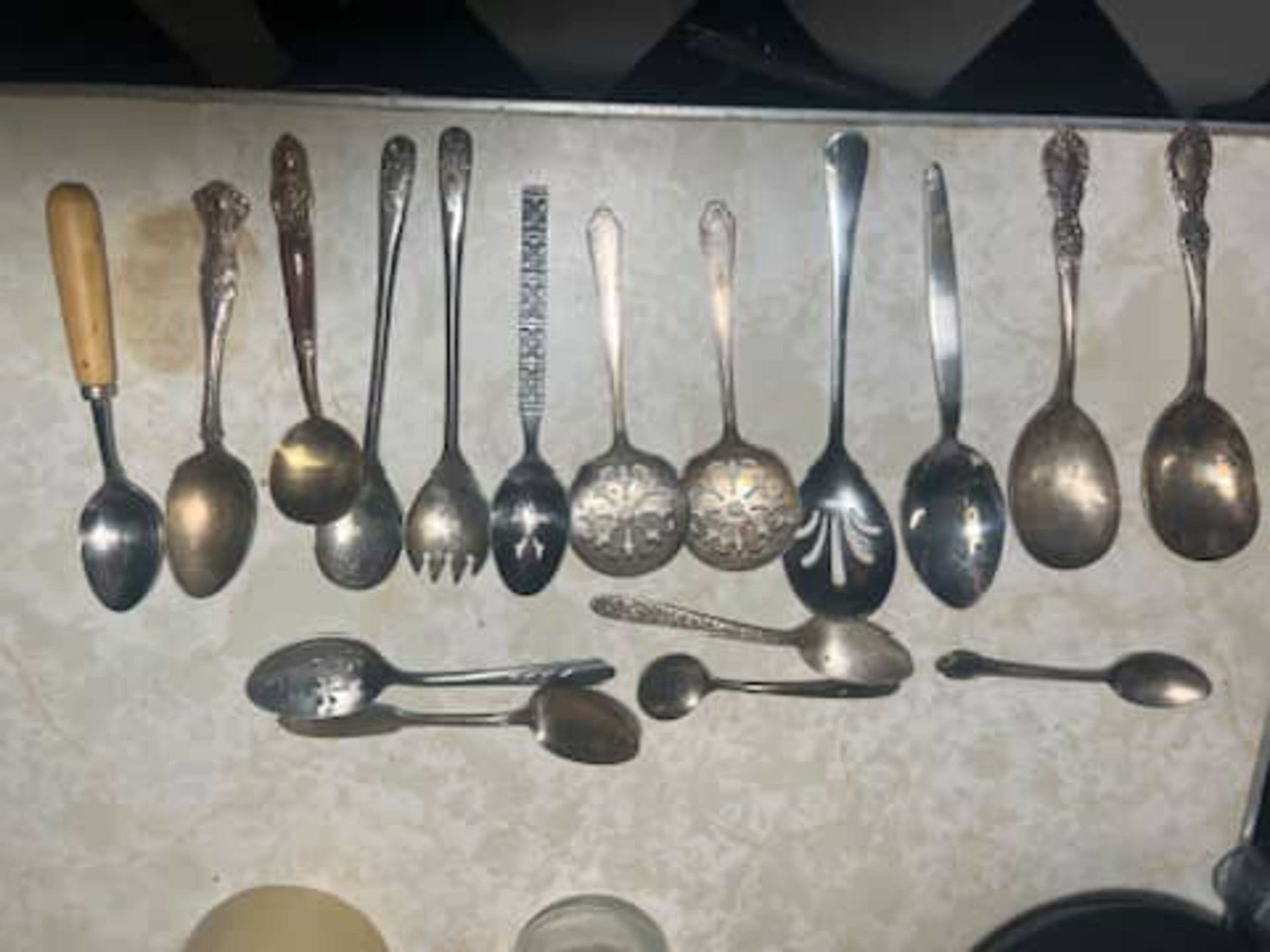
One of his favorites is a Catalonian soup spoon he got from Barcelona. It’s a metal spoon with a thick wooden handle that’s easy to hold, he said, and while it’s more of a spoon for eating rather than cooking, its deep well makes it perfect for spooning sauces and drizzling. “It just holds really well in my hand.”
He also likes knowing that each spoon has its own history. “A lot of them are old and vintage, so it’s just kind of picking it up and wondering what was done with it before,” he said.
Tiffanie Barriere, mixologist and founder of The Drinking Coach
Collecting glassware is a side effect of the job for Tiffanie Barriere. The mixologist has been tending bar for years, and part of the territory means picking up (and being gifted) enough glassware to “open up a small restaurant if I wanted to,” she said.
She has some sets in storage and more than 100 glasses in her cabinets available for everyday use.
“I think that every drink is a special occasion,” she said. That may mean she selects a piece of crystal from which to sip water or a glass mug for coffee. The variety makes everyday exciting.
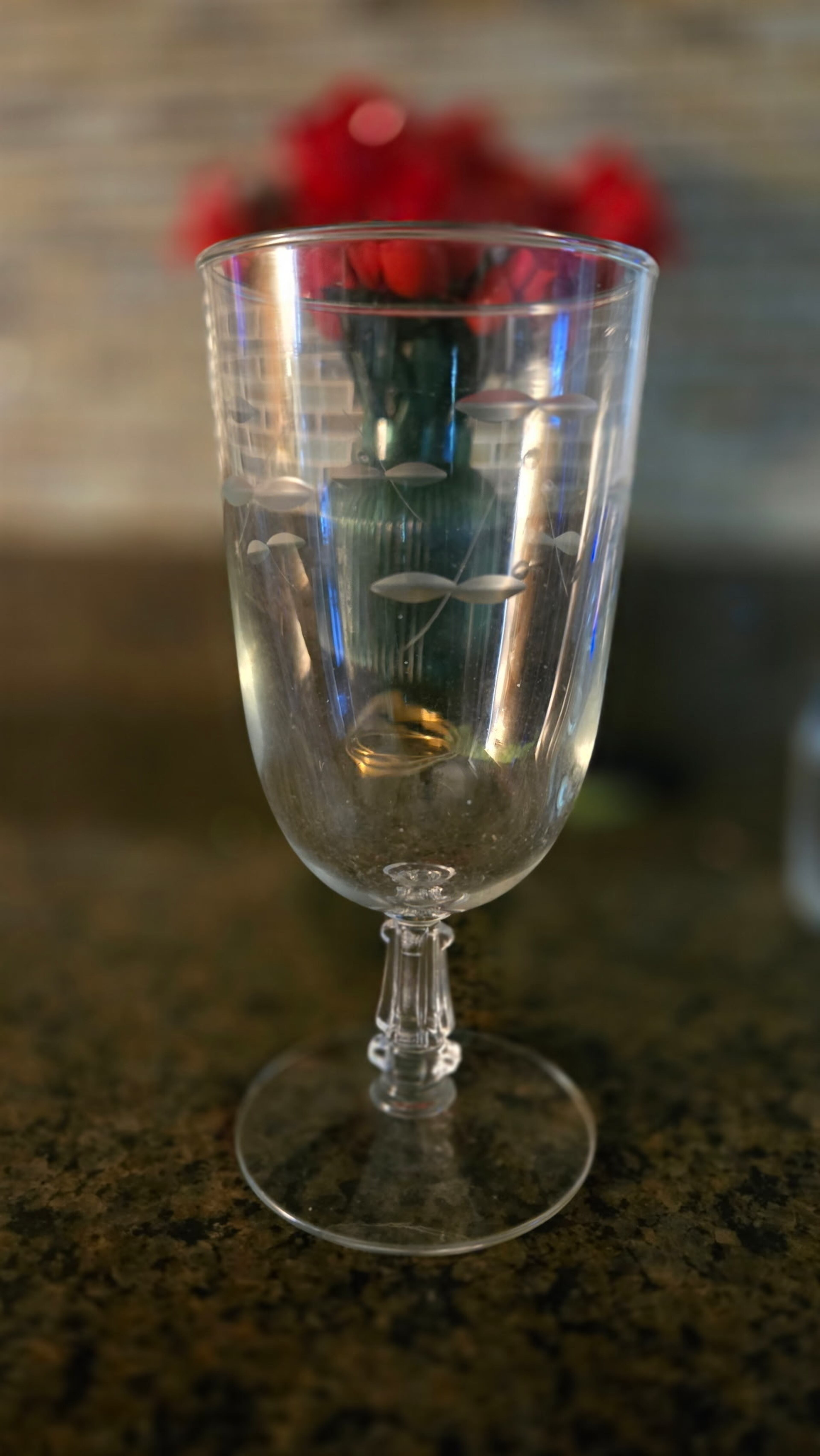
And for Barriere, the creative process can begin with the vessel. She’s currently writing a cocktail recipe book, and she and the prop stylist are going through her glassware collection to select which vessels will stand out in the book.
“Glassware is the stiletto, it’s the shoe of a cocktail,” she said.
Some of Barriere’s sentimental pieces include a set of Ikea shot glasses she always pulls out when company comes over; a red, stained-glass vase with matching sherry glasses her aunt gifted her; and some of the first pieces of crystal she purchased, a lemonade pitcher with matching glasses she and her mother found at an estate sale.
“We drink with our eyes,” Barriere said. “It’s the way that you’re choosing to consume.”

Matt Marcus, executive chef at Truth Be Told
Matt Marcus comes from a family of collectors, so it was only natural that he amass a few collections of his own.
He has a collection of pie tins, something that started after he inherited eight vintage tins from Southern chef Edna Lewis when he purchased Watershed in 2018. He’s also accumulated about 45 antique cookbooks that he scours for techniques to add to his repertoire.
Marcus never accepts a knife as a gift based on the superstition that it will cut the relationship, so he made sure to acquire his collection of 20 knives via transactions only. He has also amassed 30 small saucepots and 112 spoons.
“It’s the hands that the tools have been in, just the grace, the whimsy, just knowing that so much soul and so much love and care about bringing people together has been attached to all these things,” he said.
While Marcus appreciates each kitchen tool’s past, he likes that his own life adds another layer of history to the implement. They are reminders “of where you’ve been in life,” he said.
Jason T. Hall, executive chef at the Ashford on Dresden
Jason Hall is enthralled by the idea of “a tool being the extension of the hand,” he said. As a chef, one of his tools he values most is a spoon.
When he started working in kitchens, he always saw chefs with their tiny spoons — flipping, stirring, scooping.
During Hall’s 2010-2011 stint at Sea Island Resort, he was one of the last chefs to occupy a house near the resort, so he was tasked with clearing it out before he moved to Atlanta. Hall kept the silverware that previous chefs had left behind over the course of a decade, launching his love for collecting spoons. Fifteen years later, he estimates he has more than 300 spoons in his collection, including a spoon tattoo on his forearm.
He has some spoons from his grandmother that she and her siblings coined “lip splitters,” nickel spoons that have worn down so thin at the edge it can cut one’s mouth when eating. He also has the tin spoon his grandmother salvaged while packing her things right before the Tennessee Valley Authority floods in the mid-1940s, Hall said.
He uses Gray Kunz Spoons every day because they fit well in his hand. He has some silver ones from the ’40s and ’50s with deep, long bowls that he uses to create quenelle scoops, a technique for coaxing soft foods like whipped cream or mousse into elegant vintage-football shapes.
A few of his favorite spoons are flatter on the end and almost sharp, ideal for picking up butter or oil in a pan and basting it over scallops or steaks.
The spoon is “such a powerful utensil,” he said.
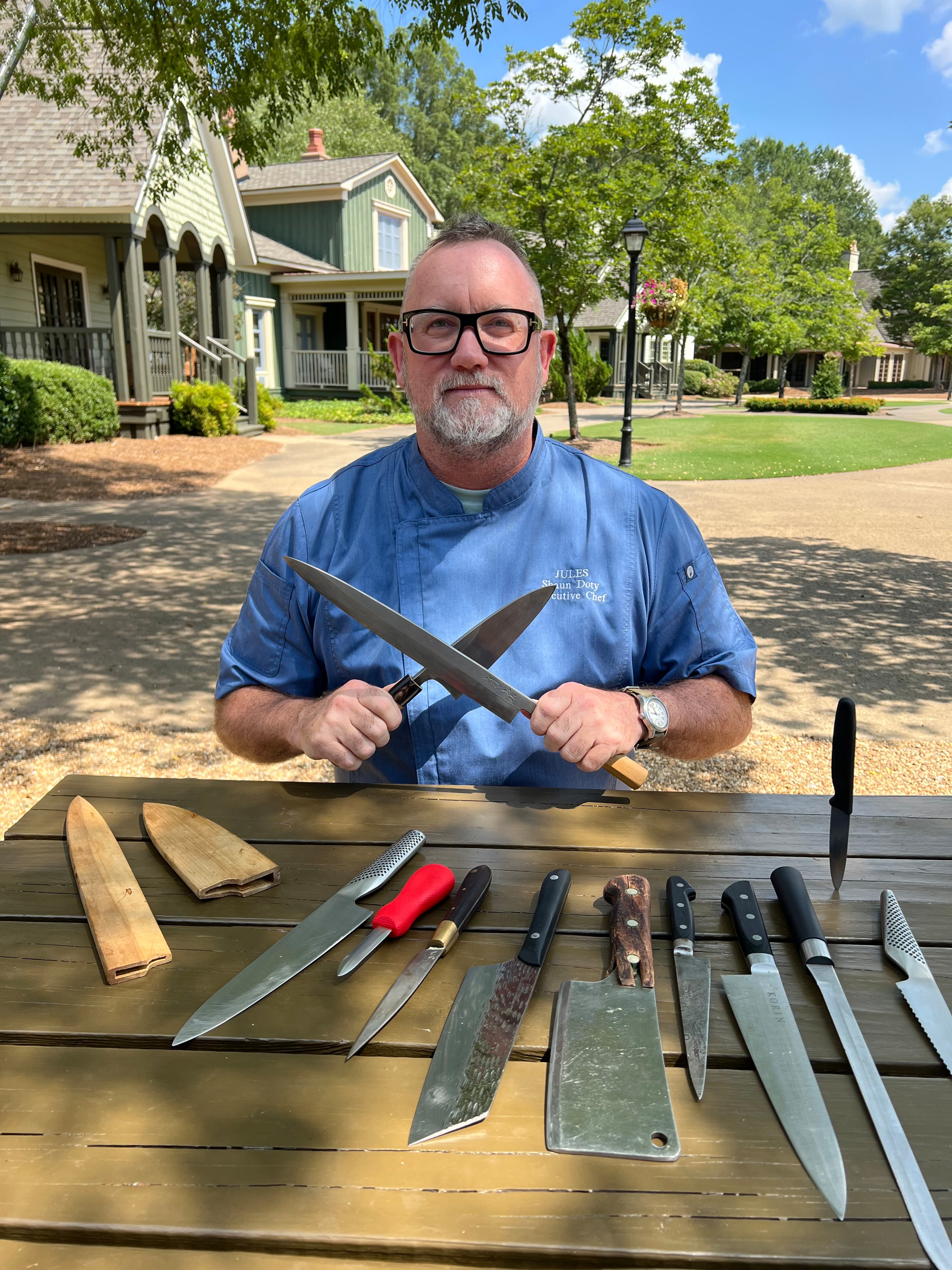
Shaun Doty, executive chef-founder at Bantam & Biddy, executive chef at Jules
About 30 years ago, Shaun Doty woke up in the early morning hours to acquire his most cherished knives in the stores surrounding Japan’s famous fish market, Tsukiji. His quest brought him to a shop that would make him left-handed sushi knives, some of his most valuable possessions.
The knives deserve respect, he said. They’re reserved for the most beautiful piece of blue fin tuna or the freshest piece of crudo.
“They represent more than me,” Doty explained. “It’s the history of Japanese forging, and respect for ingredients and product, and the desire to do the best that you can, every chance and every opportunity you get.”
Even as he travels to the Blue Ridge Mountains to help open Jules, a restaurant at Barnsley Resort, he carries those sushi knives along with about 10 more so that he has the right tool for the right job.
His collection of knives, down to the first ones he acquired during culinary school in the early 1990s, are a constant reminder of the “youthful passion” he first felt when beginning his career.
“It was like I opened a Pandora’s Box, but it was a beautiful thing that was released — the curiosity and passion,” he said.
It’s funny, Doty observed, the things you can misplace in life and the items you’ll never let out of your sight, even “subconsciously.”
“It’s unimaginable to part with (my knives).”
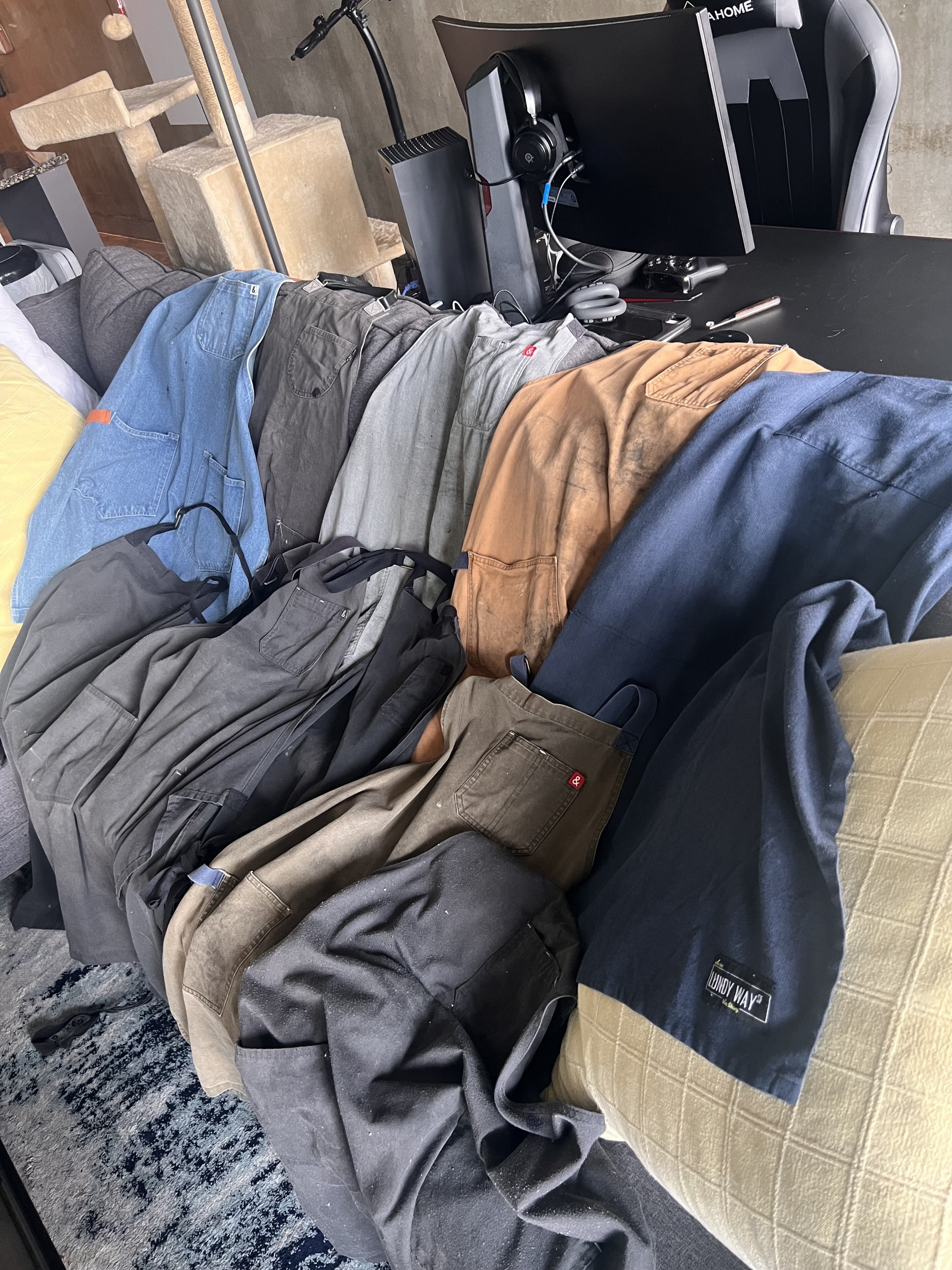
Jon Novak, executive chef at Brasserie Margot
Jon Novak likes to show up to work looking good. A vital aspect of that is the apron he decides to don each day. It needs to be something that can withstand 16-plus hours of work, from picking up hot pots to attending meetings at the Four Seasons Hotel.
He has a collection of about 25, from high-quality Hedley & Bennett and Tilt aprons to more affordable ones like Lundy Way.
The range of colors also allows him to express his identity. When he wears his Big Bird apron, “everyone knows it’s going to be a good day.” If it’s going to be a hard day, he straps on his big Tilt apron. “That’s my favorite fitting out of the bunch,” Novak said.
He has some stained and “beaten up” aprons that he relegates to his home kitchen. He even “Frankensteins” his aprons to make them last longer by holding onto pieces of old, ruined ones and bringing them to a seamstress to swap out damaged straps.
“If you feel good, if you think you look good, you usually have a better day,” he said.

Stuart Rogers, director of culinary innovation at Your 3rd Spot
Chefs take pride in their tools, Stuart Rogers said. When he was coming up in his career, he would compare spoons with his colleagues, noting any of the particularly interesting varieties. Now, he has a tool bag of about 50 spoons at the restaurant.
He likes the different shapes, from those with a round, fat edge to ones with a sharper, pointed edge. They all have particular uses, and he’ll rifle through the bag to find the tool best for the task.
Two of his most cherished spoons are from his grandmother who picked up big silver serving spoons in France in the 1940s. They sit on display in his china cabinet, having traveled all the way from France more than 80 years ago and into his hands.
“It’s just cool to kind of think about the journey that spoon took to get to you,” he said.
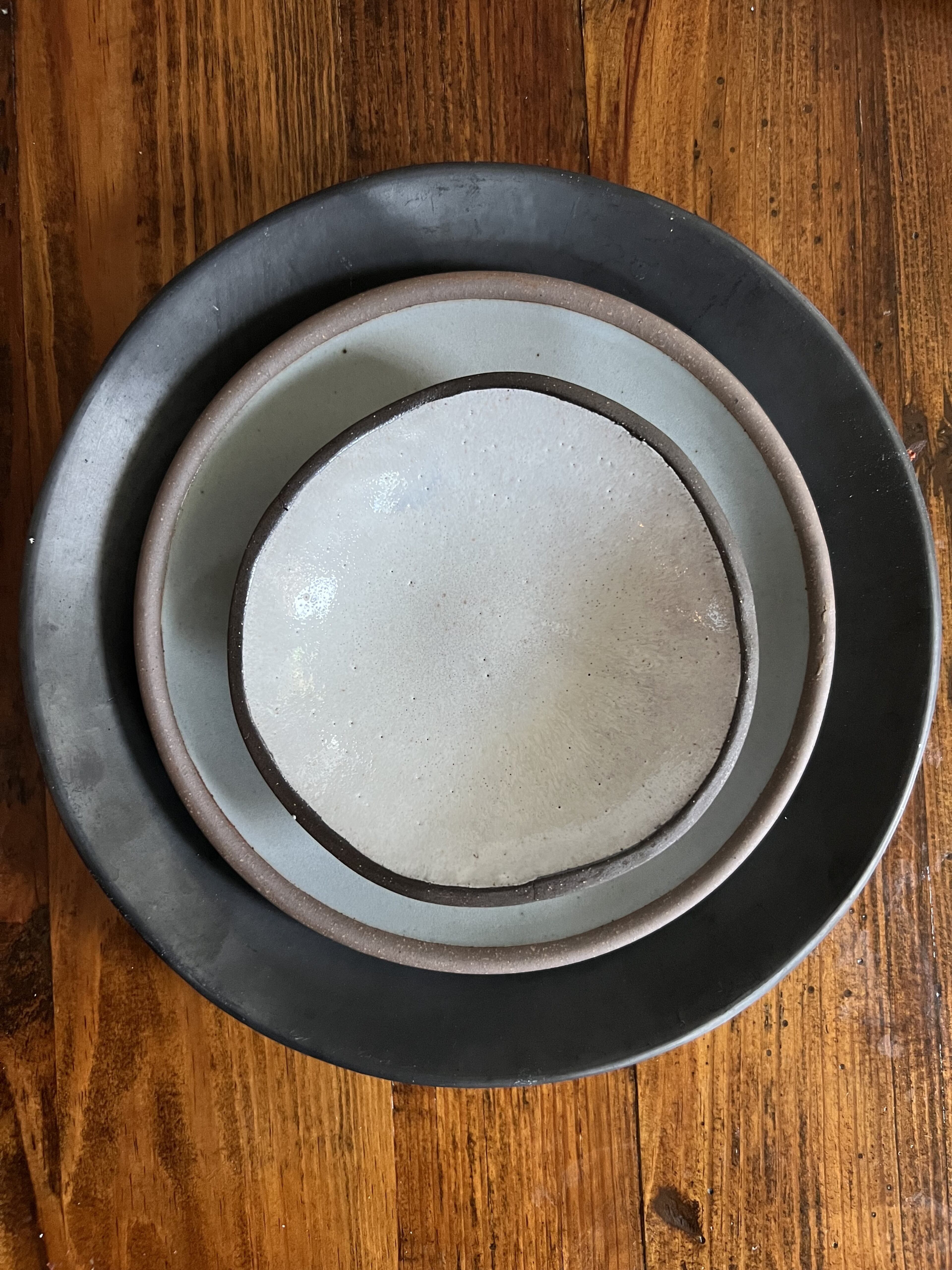
Julia Kesler Imerman, chef-owner of the Daily Chew
The dishes Julia Kesler Imerman uses at the Daily Chew are a mismatched collection of plates and platters she’s acquired over time. Some she purchased from now-defunct meal service the Peach Dish, which included a smattering of plates from local Atlanta artists, while others hail from South Africa, a reminder of the chef’s roots.
“There’s just a story behind each plate,” Kesler Imerman said.
She finds a deep joy in setting a table. Even when it’s just her family of four sitting down to dinner (her youngest son isn’t quite ready for his own place setting yet), she lays out place mats and dishes and silverware before they eat.
“I just get a lot of joy from the act of setting a table, the ritual of that, the way that it looks beautiful, and then the food comes on it and different plates show food differently,” she said.
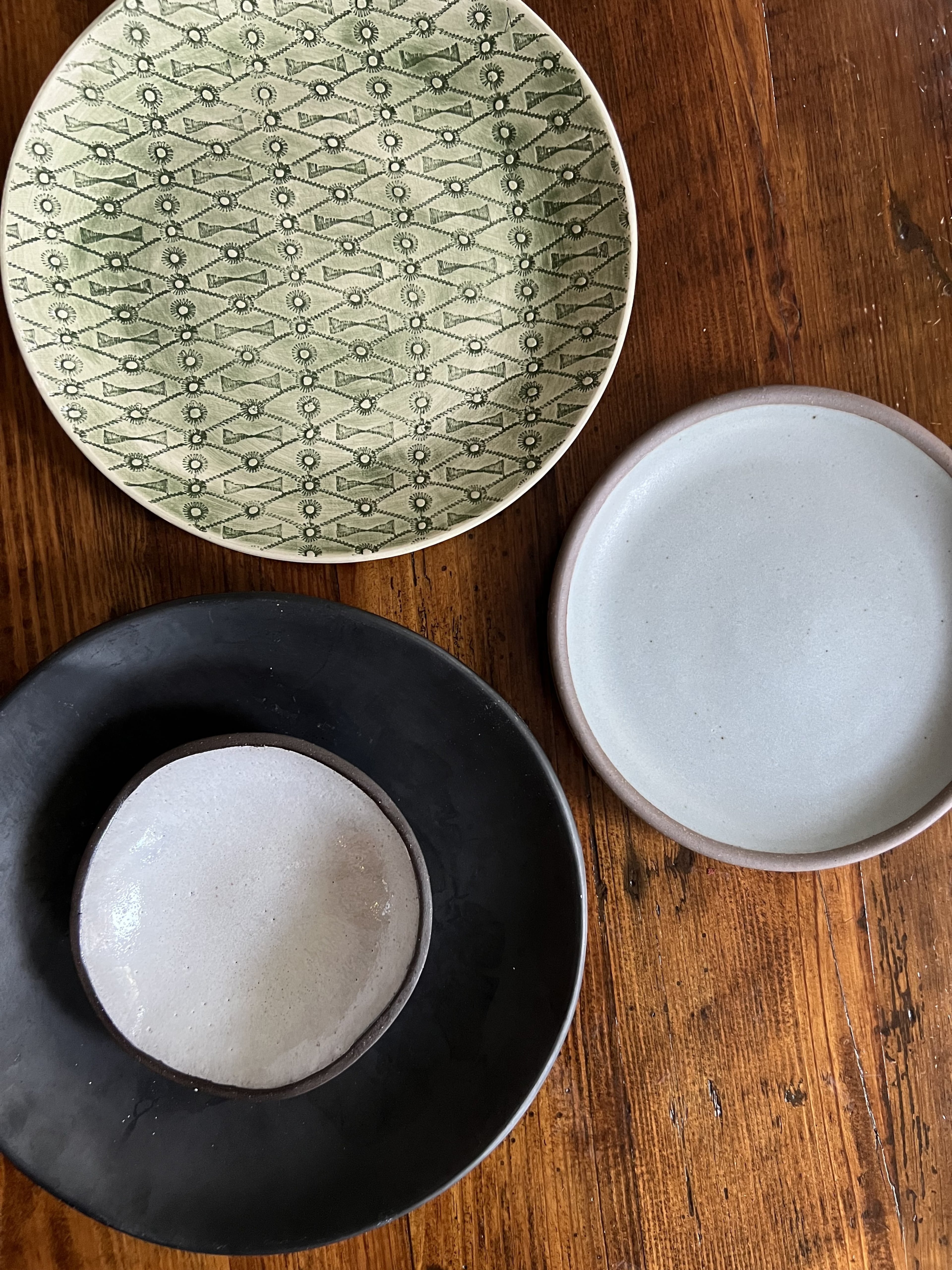
For example, a stack of the Daily Chew’s latkes placed on a plain black plate will stand out more than if that menu item is set on one of her patterned ones, she said. She wields her collection of dishes with finesse, making sure to select the right set to “keep it interesting.”
Kesler Imerman gravitates toward ceramic and pottery-style dishes. One of her favorite personal brands is Wonki Ware out of South Africa, or Atlanta potter Charlotte Smith Studios. And one day, she hopes to inherit her grandmother’s collection of dishes as well.
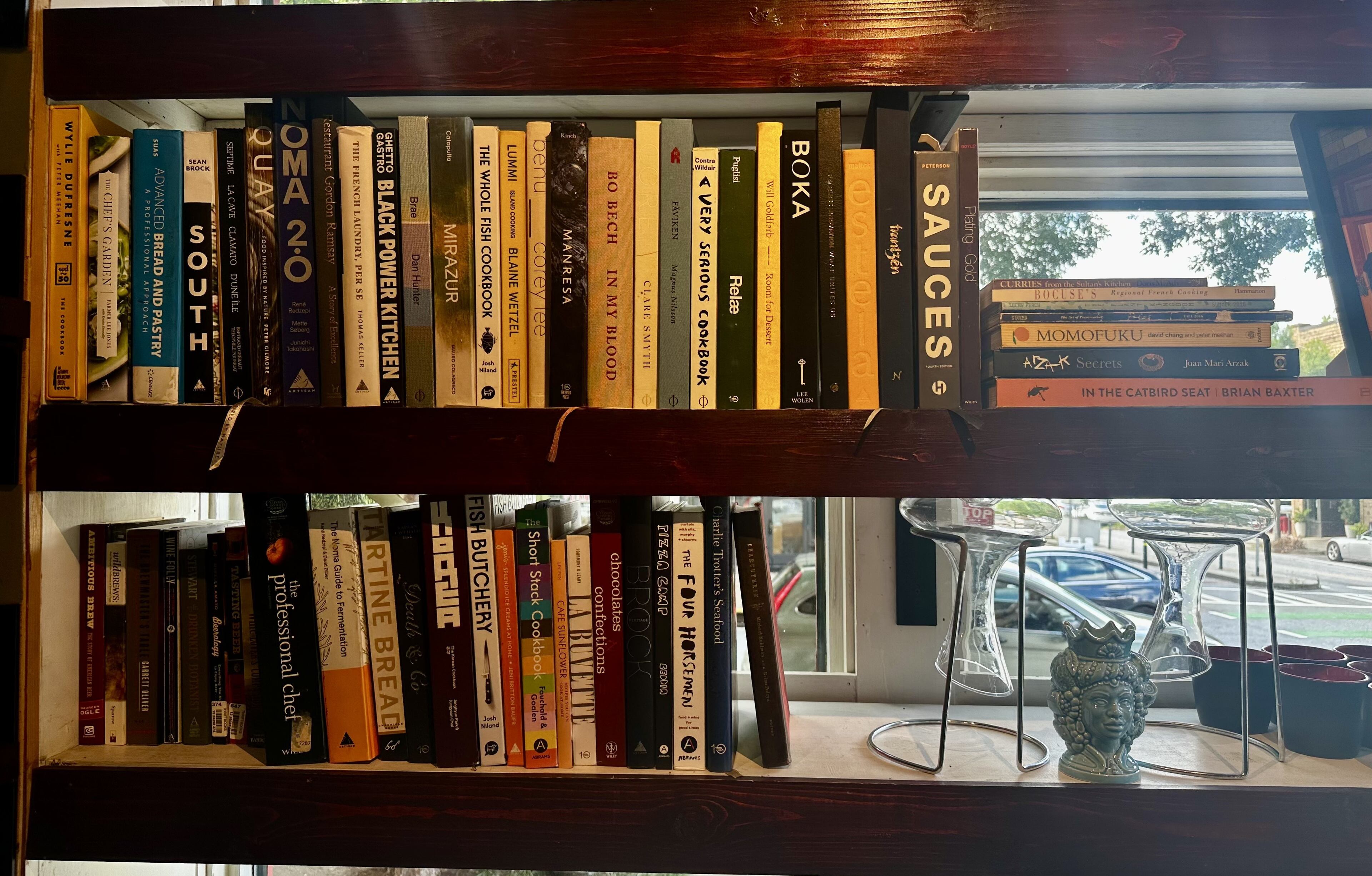
Cody Chassar, chef de cuisine at Gunshow
Cody Chassar’s first cookbook was “wd~50: The Cookbook″ by Wylie Dufresne. He got it fresh out of culinary school, where he had focused on classic French techniques for so long that reading a book with such a modern influence on gastronomy was “mind blowing,” he said.
As a young cook, he didn’t have much money to spend on cookbooks, so his solution was to camp out at Barnes & Noble for hours a day with a coffee, pulling books off the shelves and absorbing their contents before slipping them back again.
As he got older, he began adding to his collection, sometimes one new book a month.
“You may work at one restaurant, but with a large library, you can work in a million restaurants all at once because you can try to put yourself in the mind of ‘how would I cook a dish at this restaurant,’ versus how would they cook it here,” he said. “You can compare and contrast and figure out what you like.”
When Chassar reads a cookbook, he’s looking for technique rather than cut-and-dry recipes. He wants to know the ‘how’ and the ‘why.’ How does a chef or restaurant produce a specific sauce? How did they use their knife to form that specific garnish?
“Books give me the opportunity to just keep failing over and over again,” he said.
Now that he’s built up a collection of more than 75 cookbooks, Chassar shares it with his kitchen staff through a cookbook library.
“Having access to all of this knowledge is very special because it continues to push us in the direction we want to go,” he said. “(Knowledge) shouldn’t be kept from people, you know. It should be accessible and easy.”
While it’s a little like picking a favorite child, some of Chassar’s standout cookbooks are “Sauces” by James Peterson; “In the Catbird Seat” by Brian Baxter; “Estela” by Ignacio Mattos; and “In My Blood” by Bo Bech.
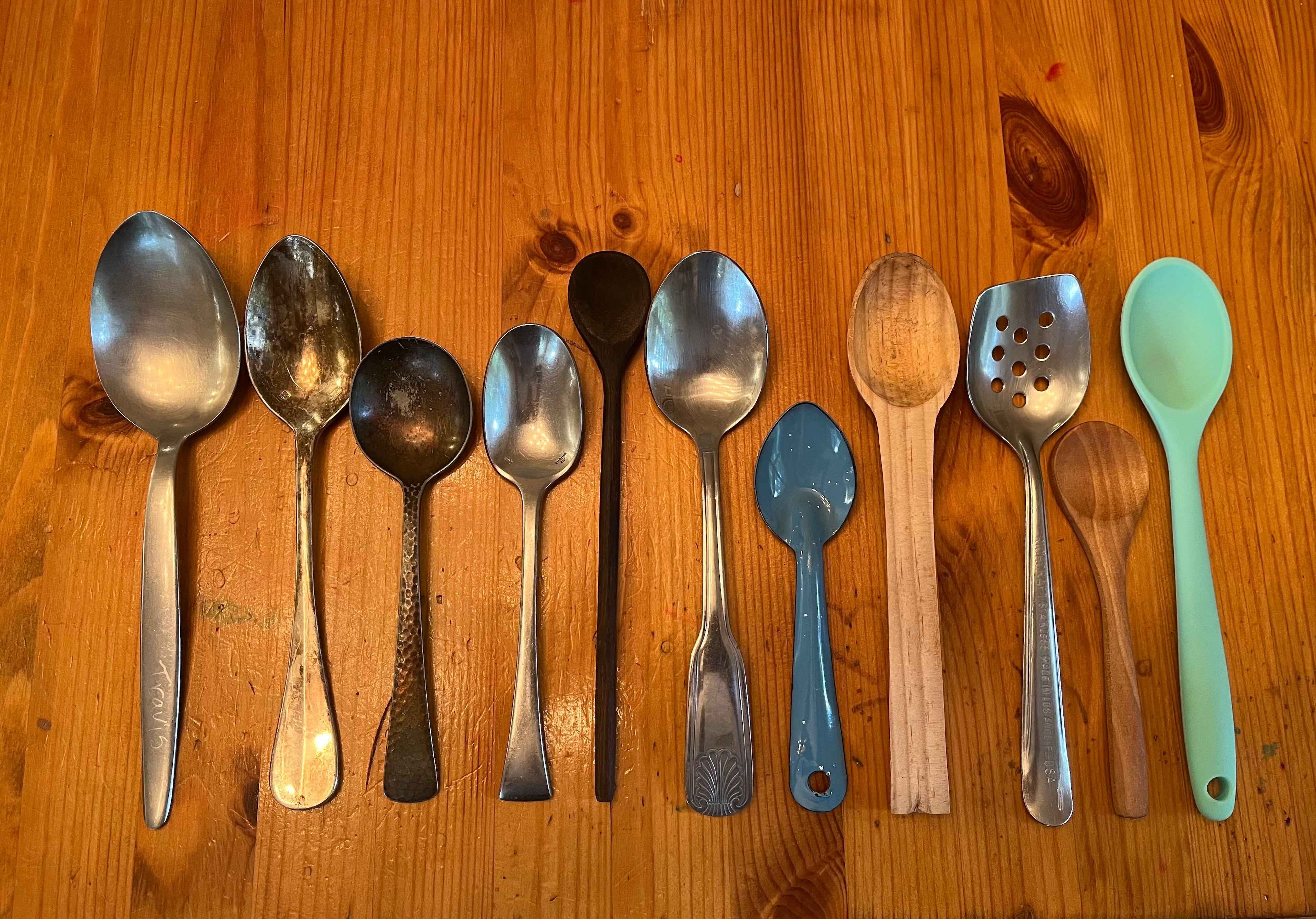
Travis Cintron, chef de cuisine at Hartley Kitchen
Travis Cintron’s collection of choice is spoons, even though he never really thought of it as such. Over his 25 years of cooking, he’s unwittingly collected more than 100 spoons.
Cintron doesn’t really have a favorite — each task may call for a different type of spoon, whether it’s perforated or designed to scoop up dumplings or the perfect size to drizzle sauce onto a plate.
He doesn’t use tongs at work, especially when a spoon will serve his purpose with “a bit more finesse,” he said.
“A spoon is just something that you cradle it and pick it up and you’re kind of putting it down, laying it down. It’s just kind of the respect of what you’re doing, of the craft.”


